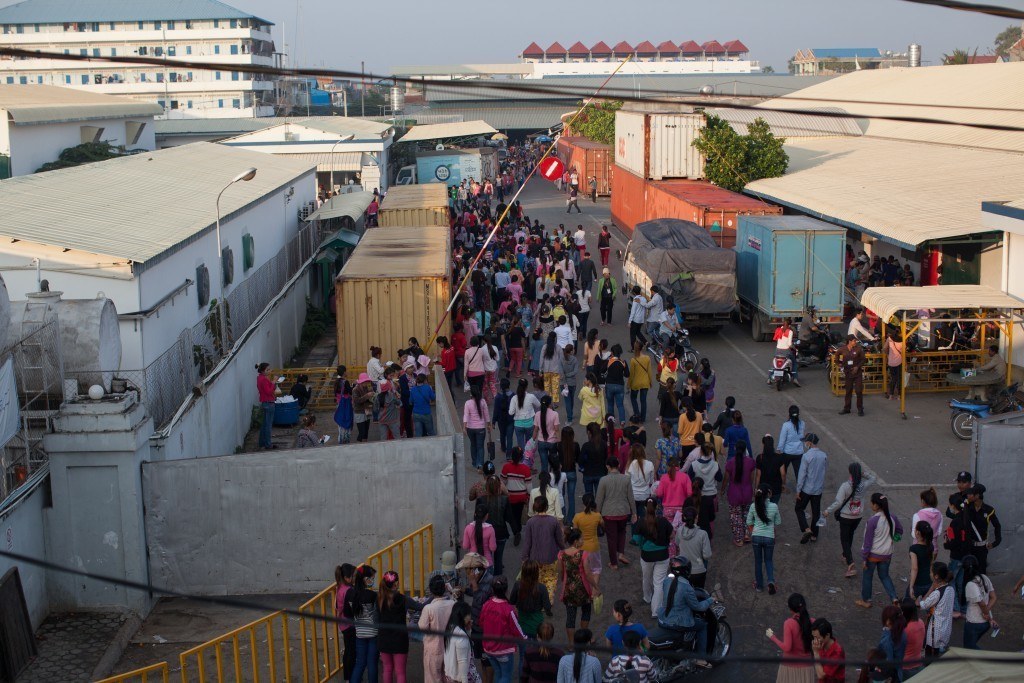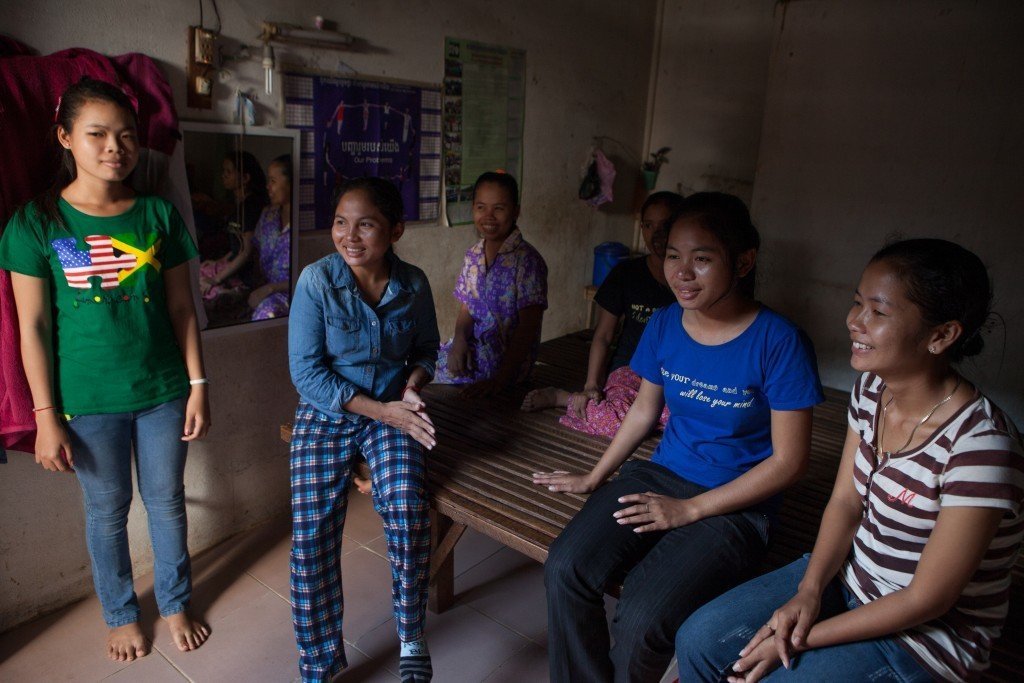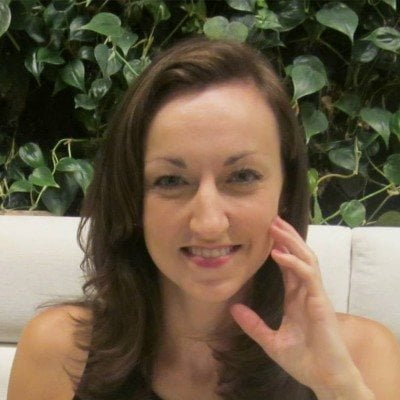On May 25, 2014, hundreds of Cambodian factory workers hosted an event that gave new meaning to the term “fashion forward.” The occasion? A one-of-a-kind fashion show in which garment workers from Cambodia’s booming textile industry modeled the very clothing they toiled in airless factories for $3 a day to produce. At face value, the show seemed like an entertaining way for the workers to spend their single day off. But a closer look revealed that the event was about far more than having fun: it was an act of defiance, a show of solidarity and, most of all, a call to action.
The Truth Behind the Clothing Tag
“Beautiful Clothes, Ugly Reality” was the collective brainchild of AJWS grantee Worker’s Information Center (WIC) and several other organizations working to promote the rights of Cambodia’s roughly 700,000 garment workers—90 percent of whom are female. Established by workers, for workers, WIC helps these young women stand up for their rights. To achieve this, it runs a network of drop-in centers where garment workers can counsel each other; access health information and legal assistance; analyze and discuss shared concerns; and organize to press for change.
WIC’s work is critical in Phnom Penh, where the concrete walls of the textile mills shield the public’s eyes from egregious human rights abuses. Behind these walls, factory owners force laborers to work overtime in poorly ventilated, overheated spaces; deny them sick days and holidays; and in some cases, attack them physically and assault them sexually—all while paying them paltry wages upon which they struggle to survive. With WIC’s help, garment workers come together to support each other and fight these abuses.


Protests Met with Violence
In recent years, WIC has been heavily involved in a campaign to secure a living wage for garment factory workers. WIC and fellow advocacy groups have called on the government, factory owners and brand name companies to increase the minimum wage for factory workers to $160 a month—a relatively small expense for a $5.7 billion industry.
In late December 2013, WIC members and fellow campaigners staged strikes and peaceful protests that coincided with a swell of demonstrations contesting the results of the 2013 elections. Tensions ran high as hundreds of thousands of people took to the streets to raise their various grievances with the government. On January 2 and 3, 2014, the situation boiled over and police shot AK-47 and handgun rounds into crowds of unarmed protestors, killing at least five and injuring dozens more. The government subsequently banned all protests and demonstrations, even peaceful ones.
Walking the Runway for Better Wages
To circumvent the restrictions and continue their rallying undercover, WIC and its allies organized the “Beautiful Clothes, Ugly Reality” fashion show. In addition to walking the runway in flirty H&M dresses, sporty Adidas tee-shirts and sleek slim-cut GAP jeans, the “fashion models” re-enacted the violence of January 2 and 3; carried placards with slogans like “End all forms of exploitation against garment workers” and “We need rice not bullets;” and emphatically restated their call for a living wage. Videos of the event were posted to YouTube, Vimeo and Facebook, where they were viewed by tens of thousands of people worldwide.

The heroic efforts of the activists were rewarded in November 2014, when the Cambodian government raised the minimum wage of garment workers from $100 to $128 per month. Their tireless advocacy saw further success in October 2015, when the government agreed to further increase the monthly salary to $140, effective January 1, 2016. Although still $20 a month short of the workers’ goal, the increase signaled that, with the right amount of pressure, the Cambodian government can be moved to act in favor of human rights.
Almost two years since the tragic crackdowns of 2014, Cambodian garment workers are regaining their confidence and resolve to press for further changes—oftentimes with the support of WIC. In the words of one young woman:
“Working with WIC gave me the confidence to speak out, to go up against the factory owners, to organize other women into the union. Before, I was silent, but now I’m defending my rights.”



Carolyn Ziv is a Communications Officer for AJWS.






